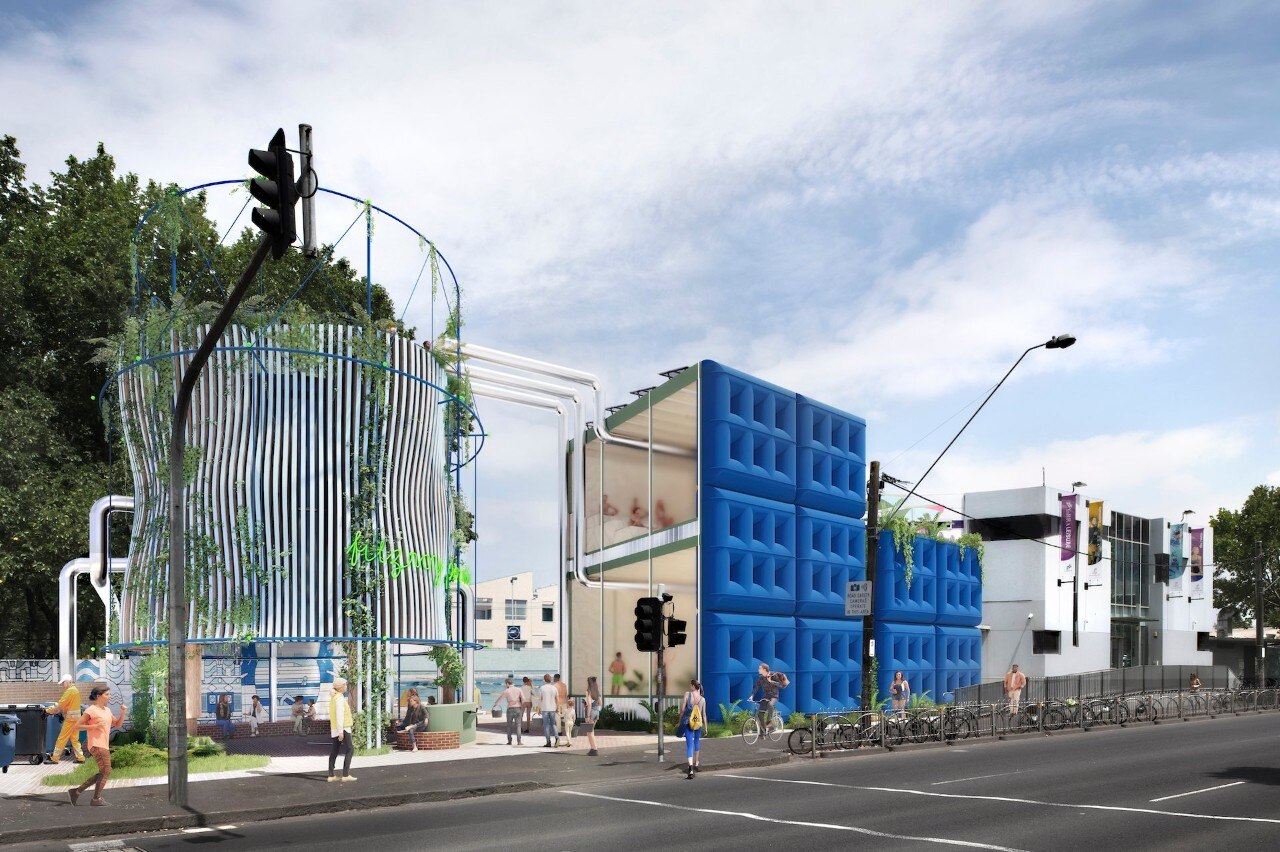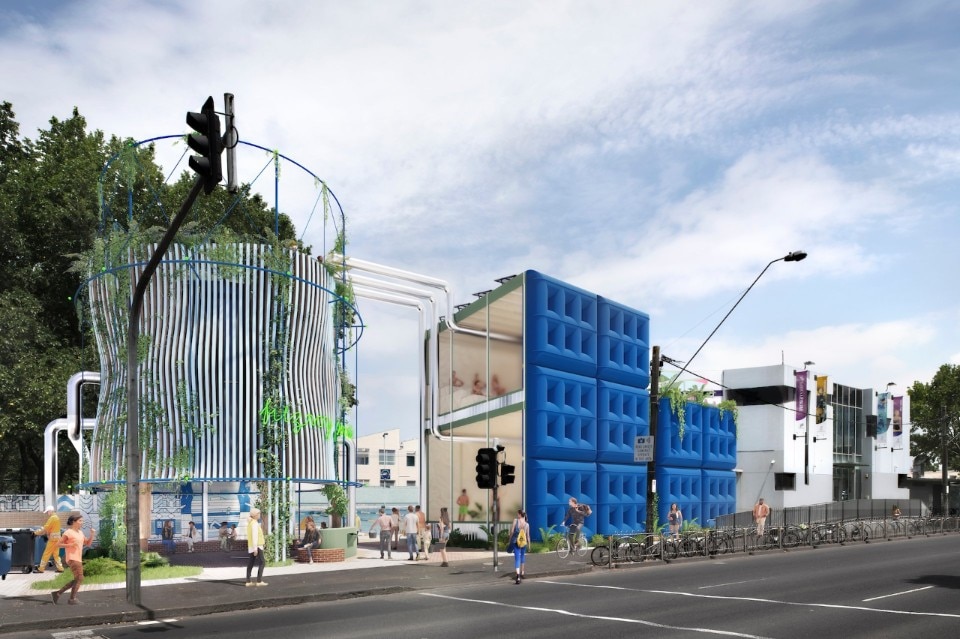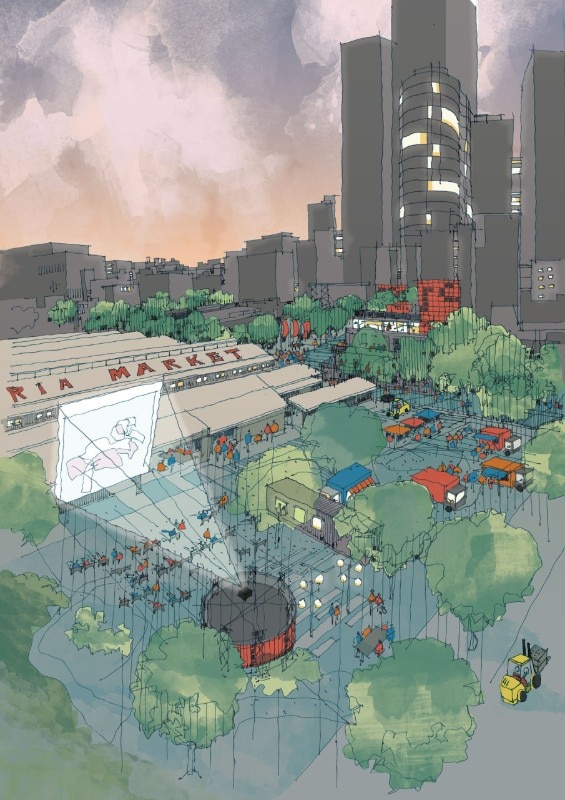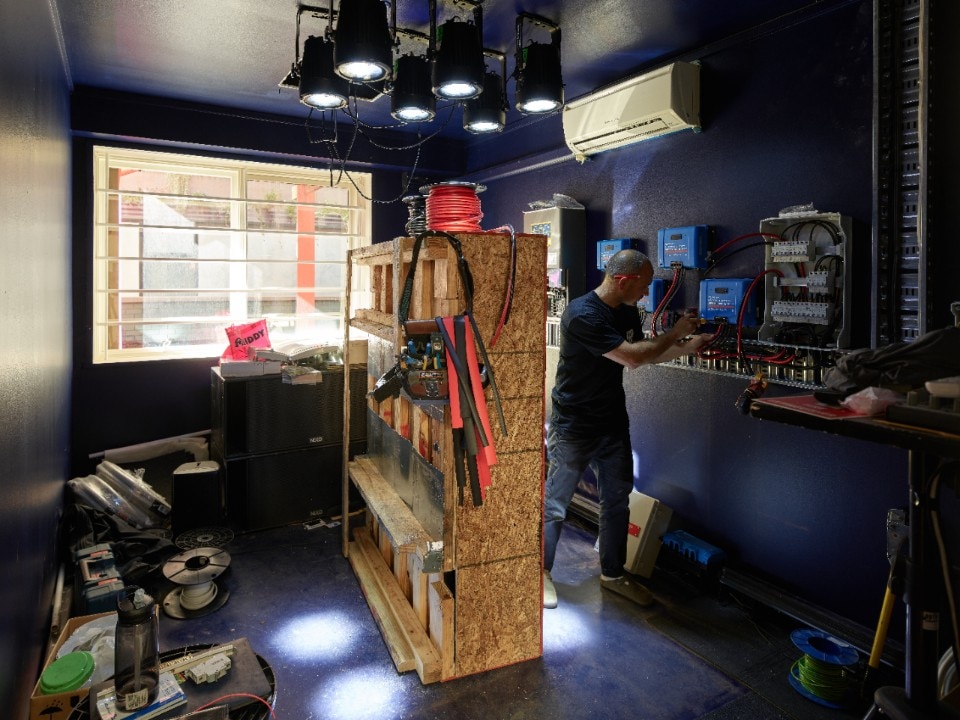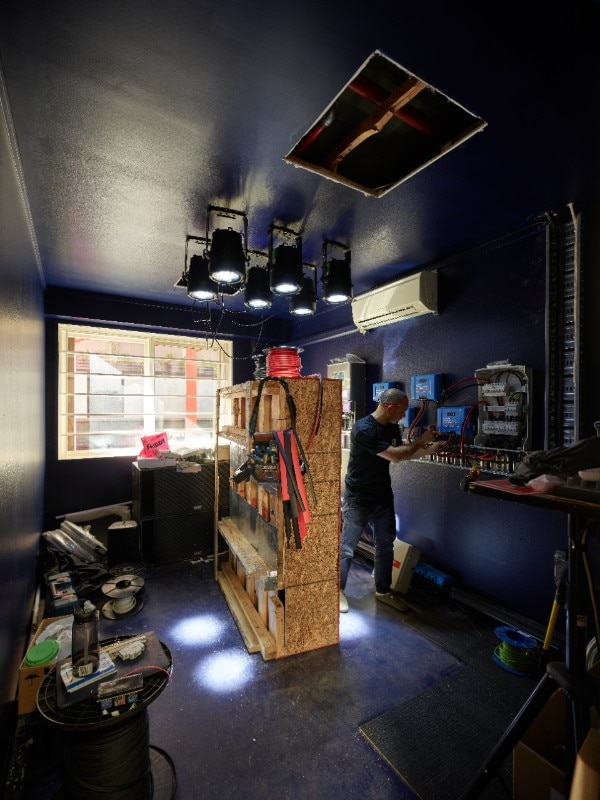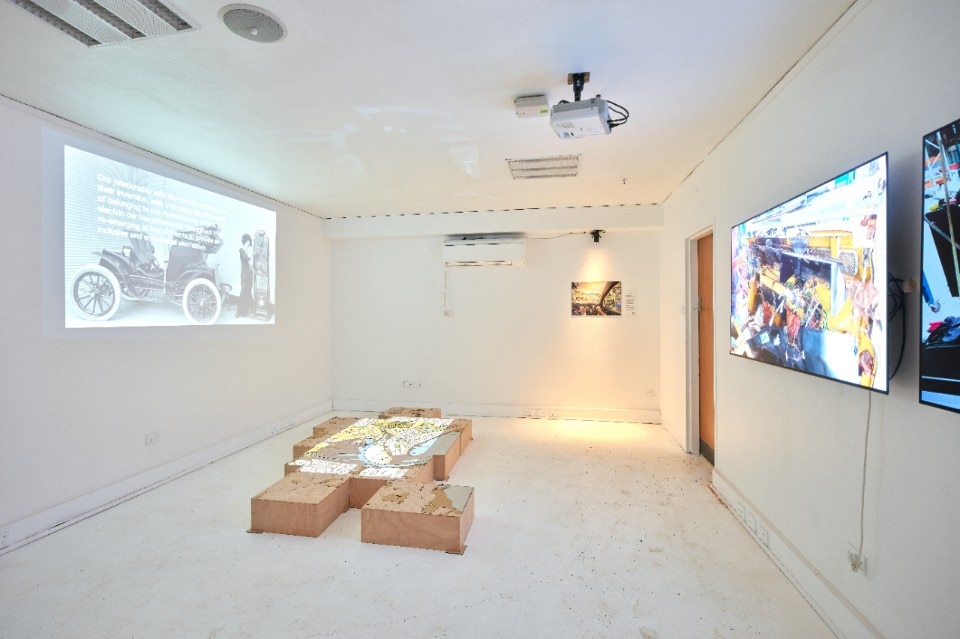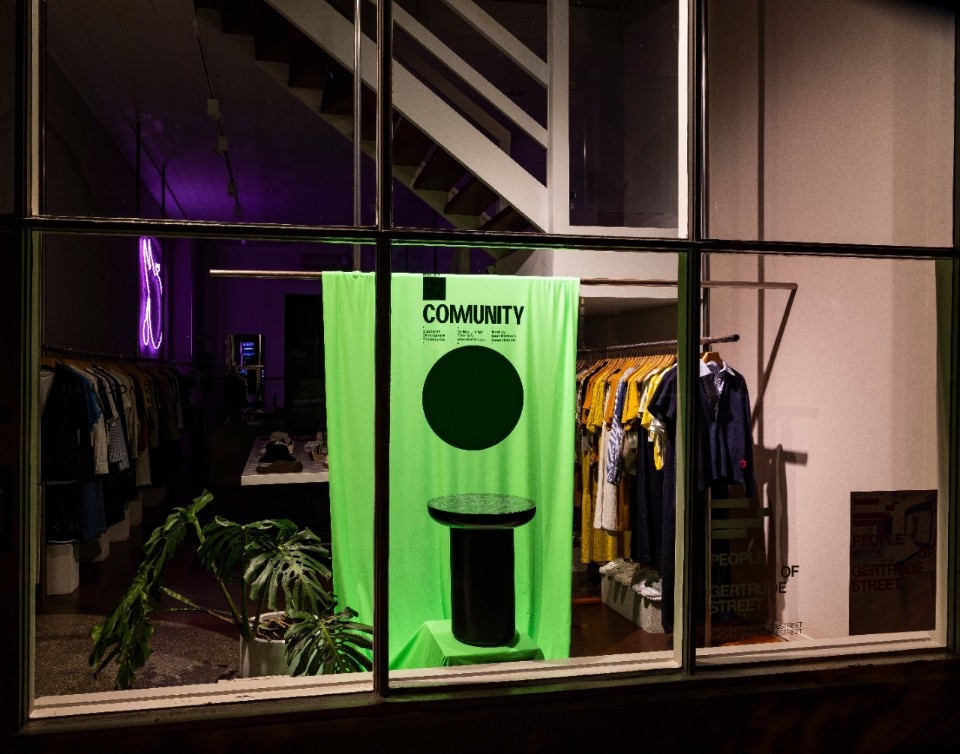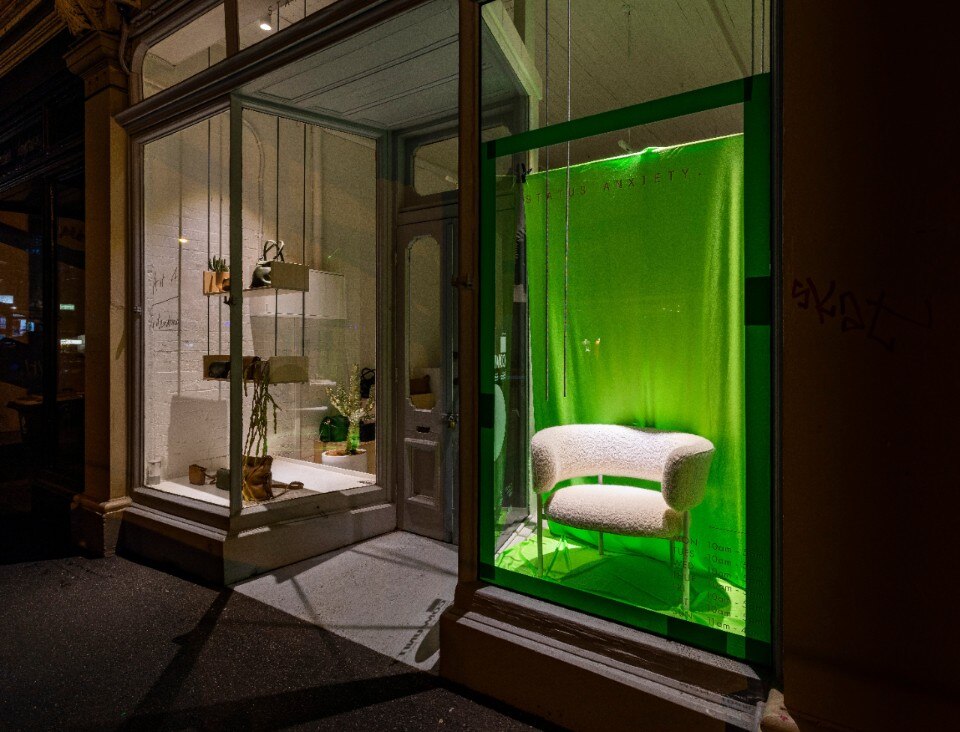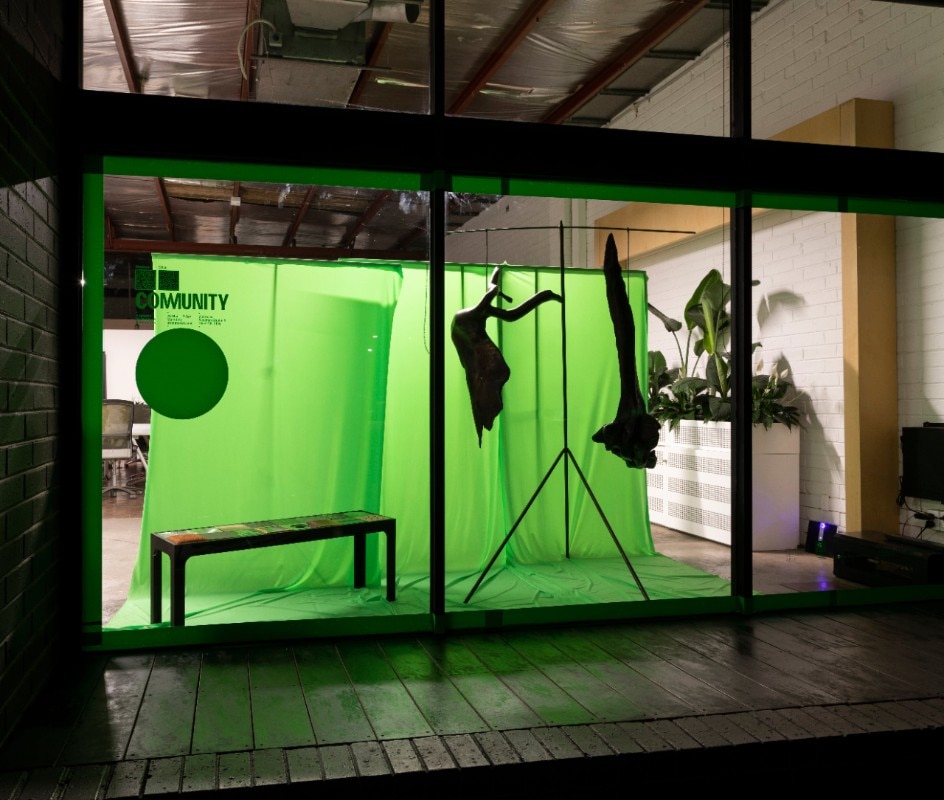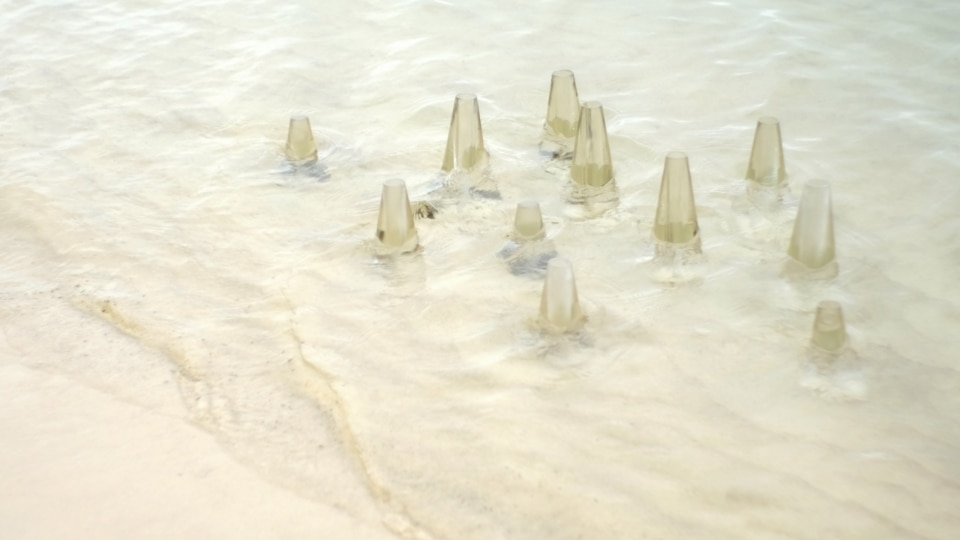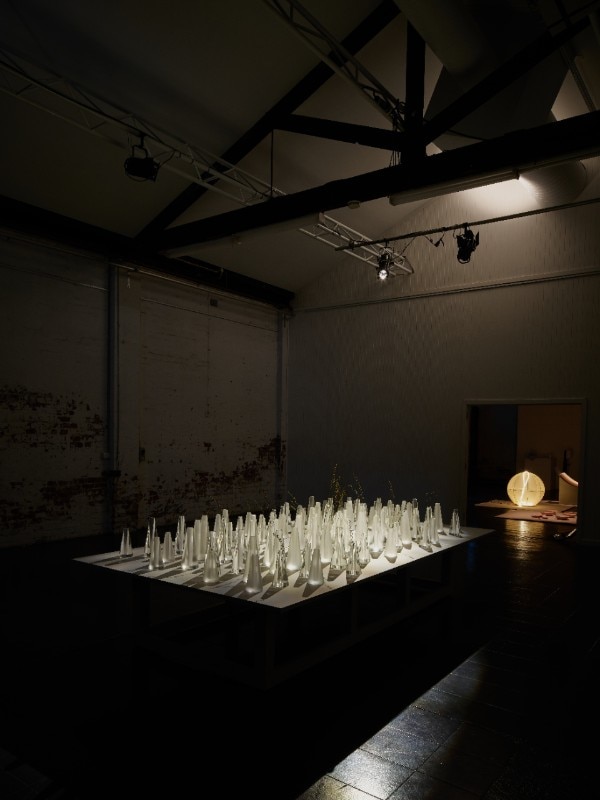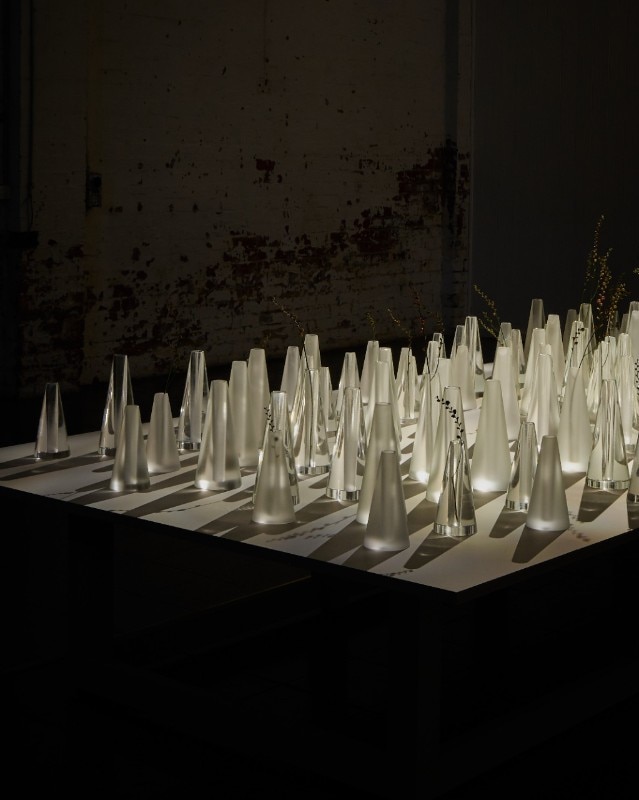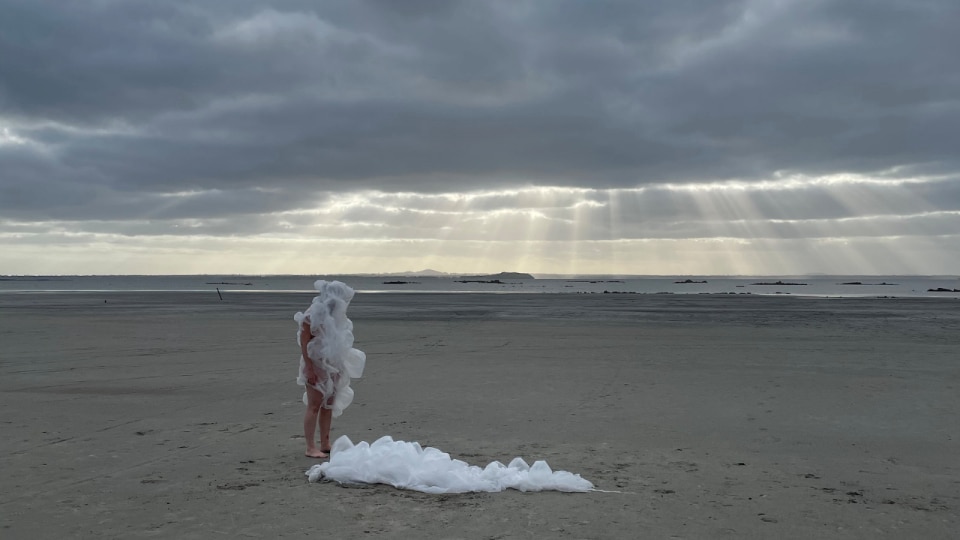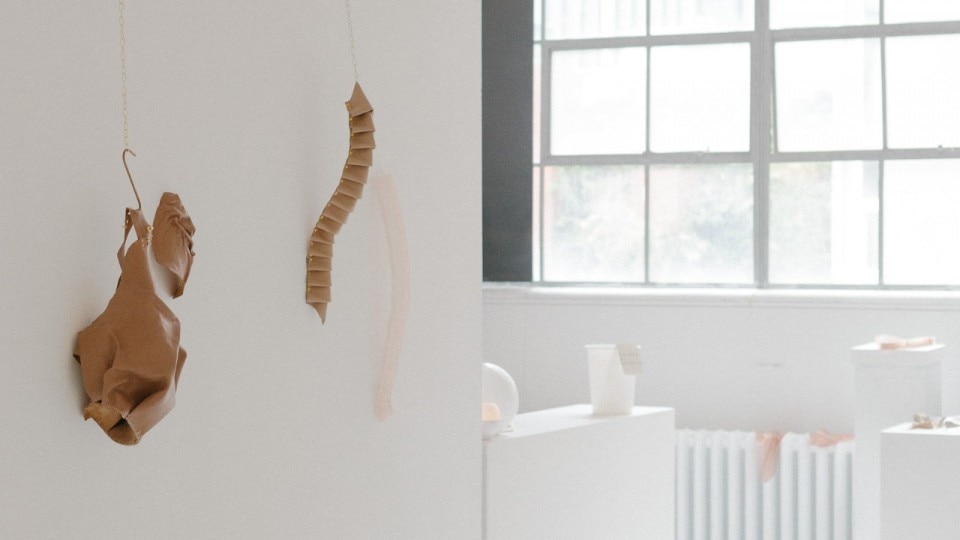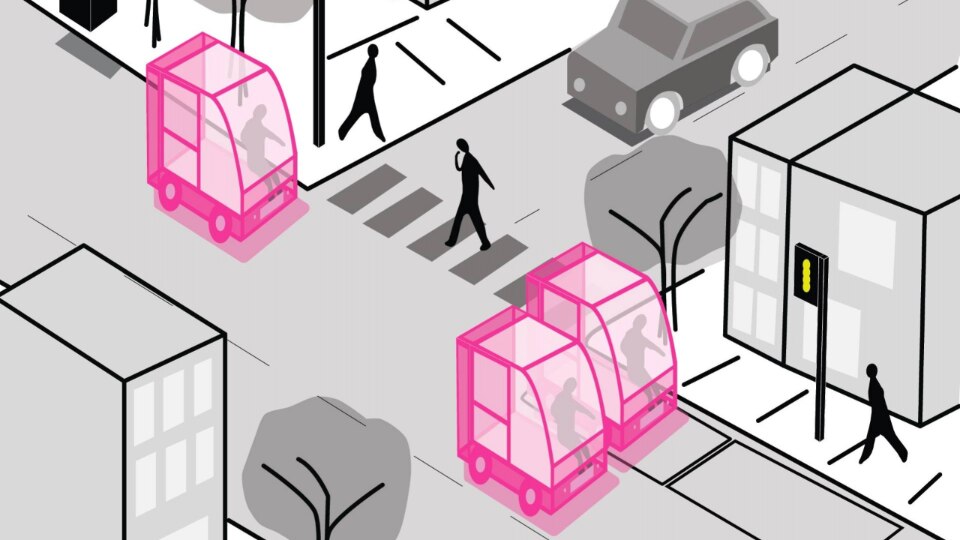On the way to the airport to catch my first flight in a year I took stock of my surroundings in northern Sydney . As usual I noticed hedges and trimmed bushes. Between properties, inside parks, along train stations and even on medium strips, hedges represent a local neurosis of repressing nature. Framed by bushland and the sea, North Sydney works continuously – sometimes fatally – to tame and cultivate its sprawling wilds. By contrast with this careful sense of order, Melbourne felt young, dynamic and relaxed. Blessed with a long weekend of unusually warm weather, people were messily spilling onto sidewalks and filling up rooftops outdoors. Having lived through one of the strictest pandemic containment lockdowns in the world, there was a general excitement to come together again.
The age-old brief of designers to order, restrain, and repress was superseded by a new imperative to respond, facilitate, and relinquish control.
The Covid 19 pandemic and black summer Australian bushfires of 2020 shocked us out of an assumption of control and order. In 2021 Melbourne Design Week reflected this upheaval, suggesting how we can start to use these spaces to reflect new priorities of community, sustainability, and even hygiene. The age-old brief of designers to order, restrain, and repress was superseded by a new imperative to respond, facilitate, and relinquish control.
Connection
One exhibition speculated on how transportation design could change post pandemic to reassure commuters about returning to public transport after lockdown. With ‘Transport Yourself’, Daniella Bassin and Lauren Levy imagined a new system comprised of small travel pods that allow users to connect and disconnect, come together and separate, linking together into long snake like chains which can take you door to door wherever necessary: a fictive if impractical proposition for public transport in the future. To forge connections between existing local retailers and designers, alt.material chose to produce a distributed exhibition in 18 storefronts across the suburbs of Collingwood and Fitzroy for its exhibition ‘Community’.
The exhibition was a direct response to the Victorian lockdown requirement to exercise and shop within a 5km radius of home, avoiding interiors as much as possible. Highlights included Adam Cornish’s Wooden Hammock in solid timber, a result of being able to take things slower during lockdown and collaborate with makers in new ways. Focusing on the life cycle of materials, Elliot Bastianon featured objects as a platform blue crystal mineral growth. The work draws attention to the capacity of some materials to grow, decompose and change as they “followed their own set of rules”.
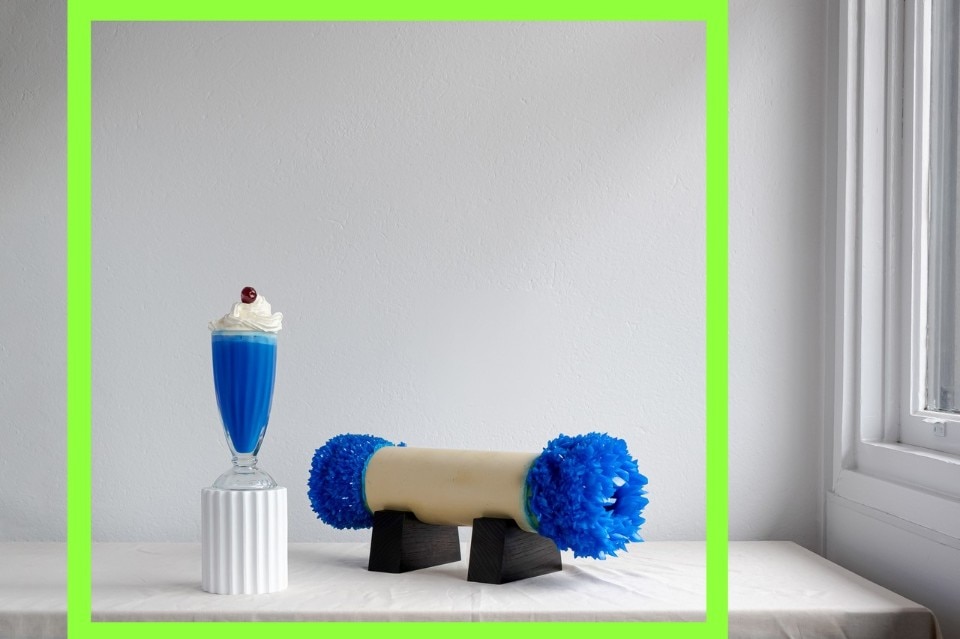
Materials
With this approach to material the designer is working less toward a preconceived outcome. Rather they are approach it as a scientist might, putting elements together in an experimental way to see what happens, allowing the outcome to be different every time. The exhibition ‘Drift’ by Tom Fereday presented by Friends and Associates immerses 100 cast quartz glass forms in the tidal water of the Tasman Sea, each developing their own unique patina through the slow and powerful tides of the ocean rather than the artificial energy of machines. This passive finishing process created a series of irreproducible objects through allowing things to happen rather than conceiving of an outcome in advance and moulding a series of identical objects to match this conception. This play with the volition of materials was for some artists a direct result of the effect of lockdown restrictions on the collaboration process. In ‘What is This?’, an installation by artists Anastasia Le Fey, Holly Durant, with a film by Lucy Pijenburg and Sara Reallick, woven props appeared alongside strange prostheses hanging off butcher’s hooks, while garbage bags woven into intricate serpentine bubbles lead us through the space. In an artist talk they described in terms of post humanistic deference how being unable to come together to collaborate made them take a step back to allow the material to “tell its own story”, Le Fey said, with the material becoming “a collaborator in the work”.
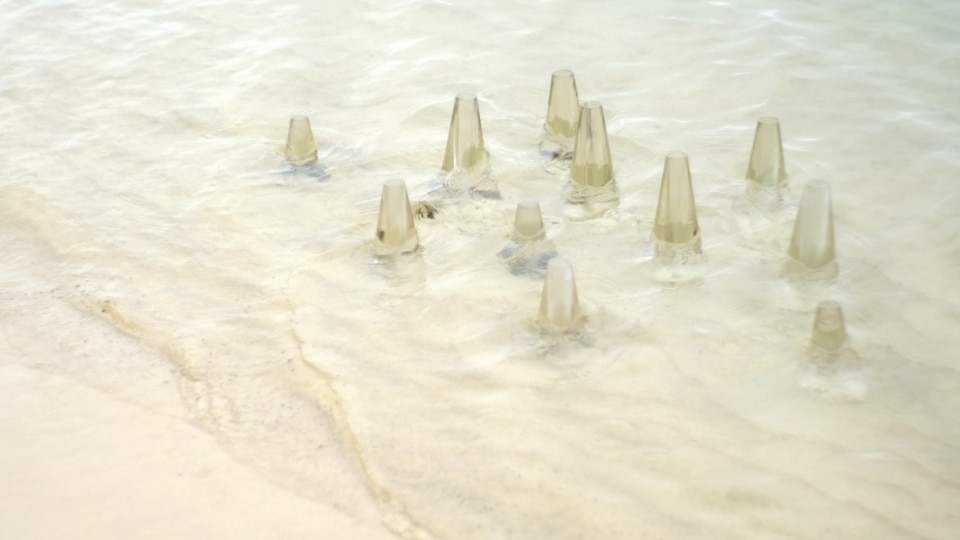
Transformation
An event titled ‘A new suburban ambition’ at Monash University looked at the potential revitalisation of the suburbs following the Covid19 pandemic, an area ripe with potential for transformation in density, supply and sustainability. In Brisbane Peter Nelson described the problem of the ‘missing middle’ suburbs, with the typical detached single story suburban house occasionally interrupted by but not well linked to town houses or high-rise apartments. One proposed solution was a renewed focus on ‘medium density development’ with Alicia Pozniak and Stefan Preuss advocating for government agencies to lead change through demonstration projects and better standards to produce affordable low emission buildings that “shift the perception of what a home is”. In Stockholm, Japan, Singapore, Vienna and Berlin government housing has become some of the most desirable housing stock. The clear message was that Government could play a much bigger role as designer, developer and partner in establishing new standards of sustainable affordable housing and neighbourhood development in these crucial areas of the city.
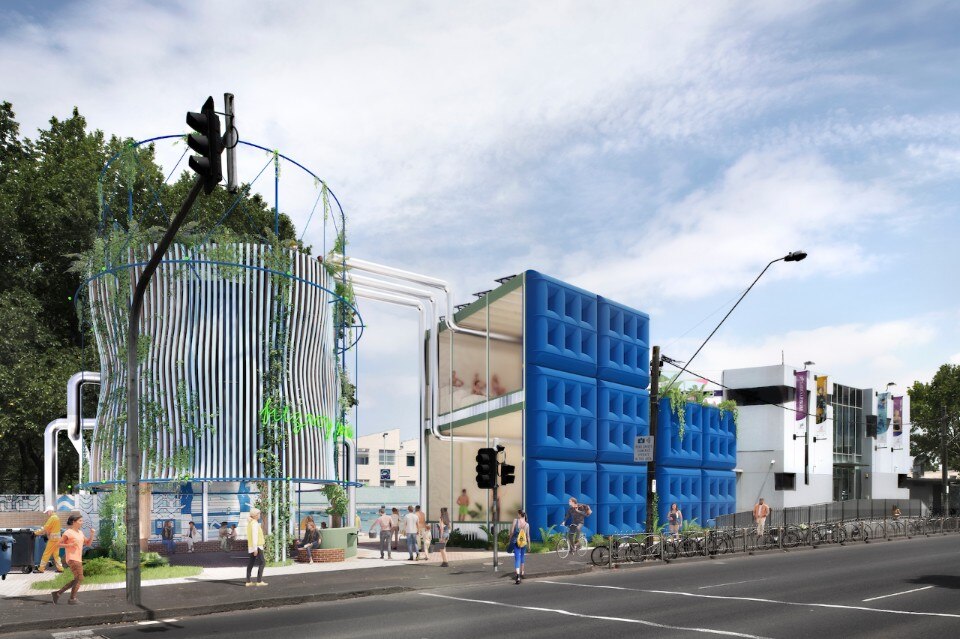
Part value proposition, part exhibition, ‘A New Normal’ gathered together leading Australian architects to demonstrate how Melbourne could use existing technologies to become fully sustainable by 2030. This compelling exhibition showed city residents how abstract conversations about resource sustainability could look if realised in their home, car, neighbourhood or city. In a series of indoor and outdoor spaces, Finding Infinity presented prototypes and costings of 15 achievable projects to transform the city’s buildings, waste cycle, transport network, water and energy infrastructure and food production. The projects are exceptional in their balance between creativity and viability. Grimshaw, Greenshoot and Greenaway Architects proposed an electrified vehicle service station which would replace the sale of petrol with an electrification conversion service, transforming existing cars into next generation electric vehicles.
Hassell repurposed an existing carpark in little Collins Street to create a microgrid out of electric cars linked together in a series which would become a kind of contemporary performance space after commuters went home. Another project to make change enjoyable, WOWOWA Architects envisage an anaerobic waste digester to power a swimming pool and sauna, the simple everyday act of responsible waste disposal creating an asset for the entire community. The project deconstructs the city, allowing us to view familiar sites with fresh eyes and to anticipate their transformation. There is an option to invest in the further development of these projects, with visitors invited to contribute to a process that could pay for itself after ten years. What we consider to be an abstract, distant and potentially destructive transformation should begin now while we can still benefit from it.
Change will come for us whether or not we anticipate it. Our best laid plans could be disrupted. Houses will burn, borders will close, species will go extinct. Change is strange, but it can be interesting, beautiful and even fun to choose an outcome that isn’t yet complete, which hasn’t been scripted. Melbourne Design Week 2021 shows us what can happen when we facilitate and permit change, rather than struggling at all costs to contain it.
Melbourne Design Week took place from 26 March to 6 April 2021.


